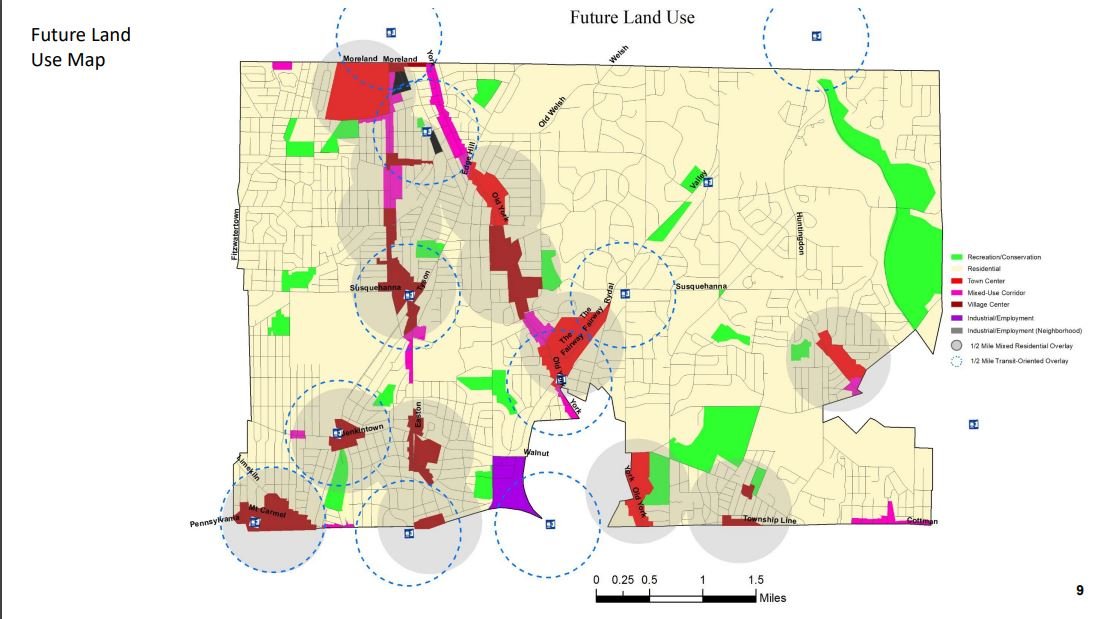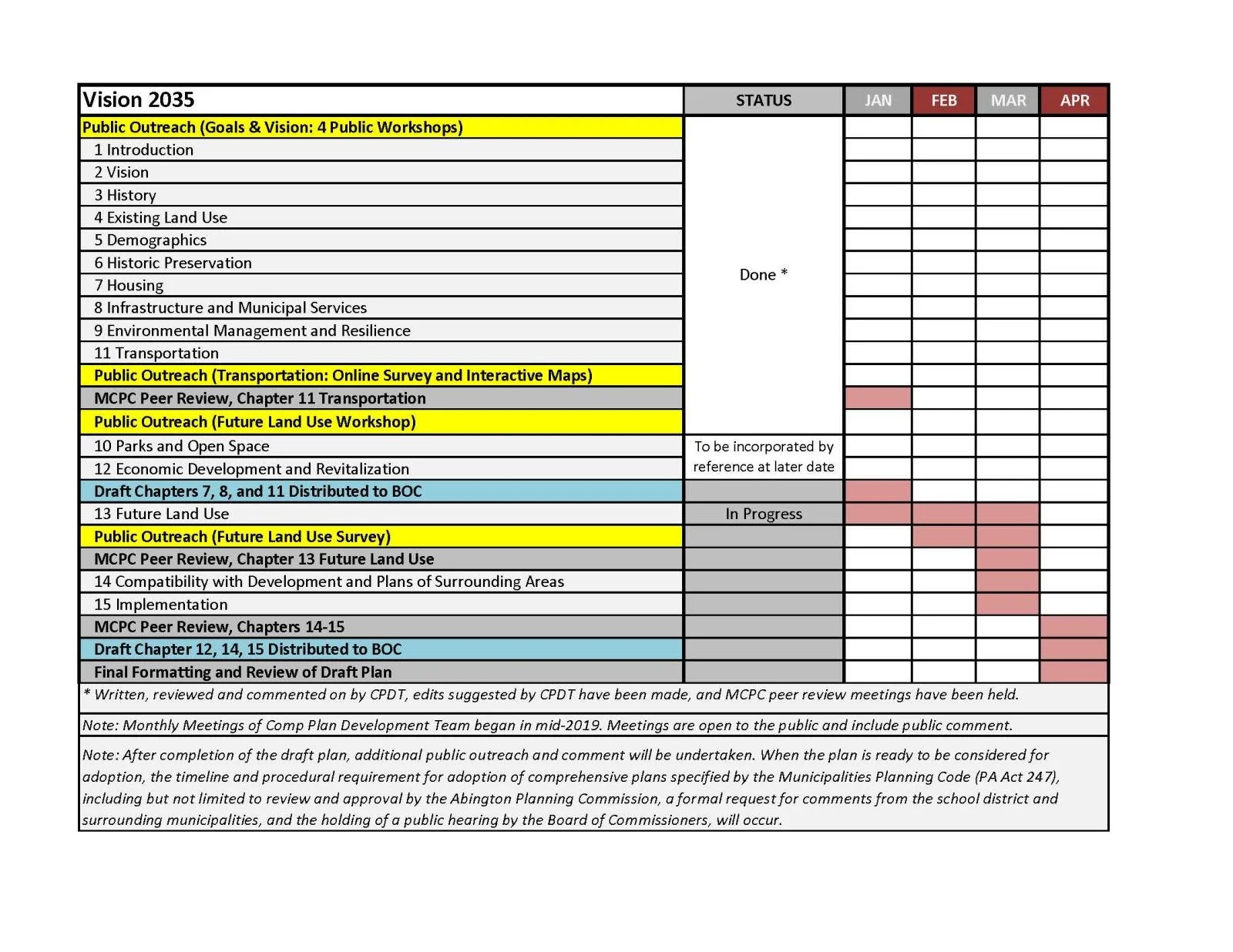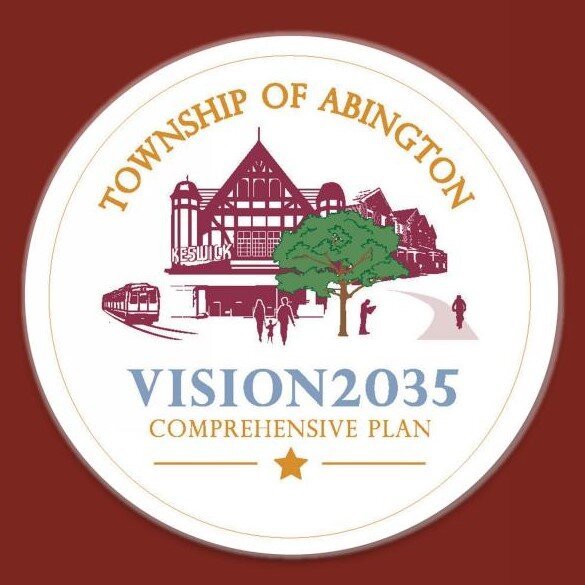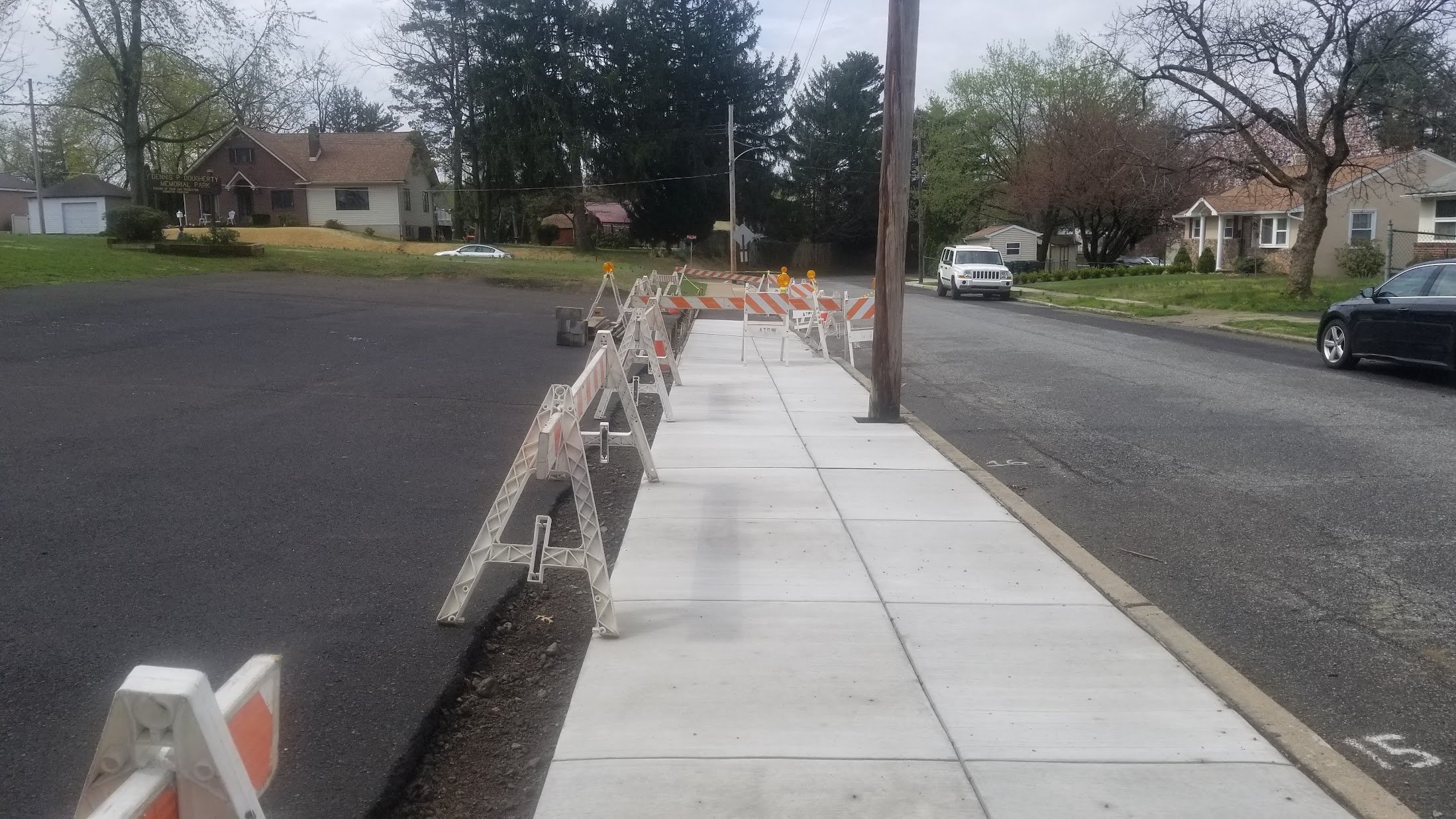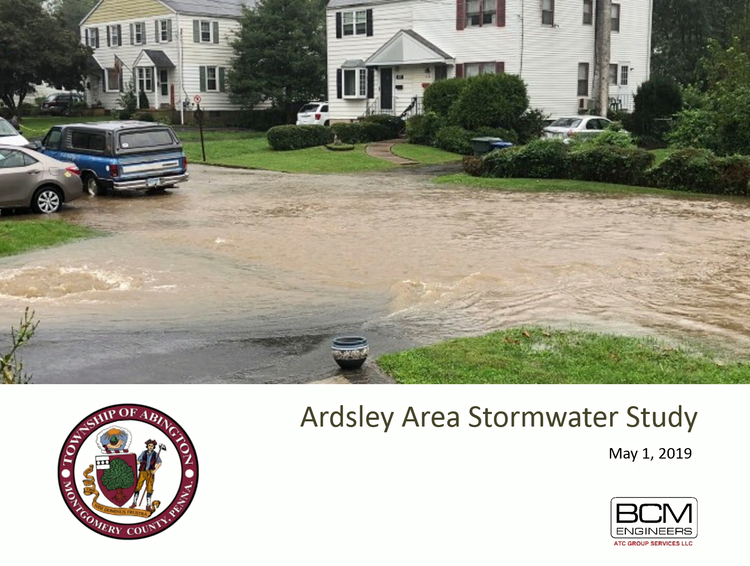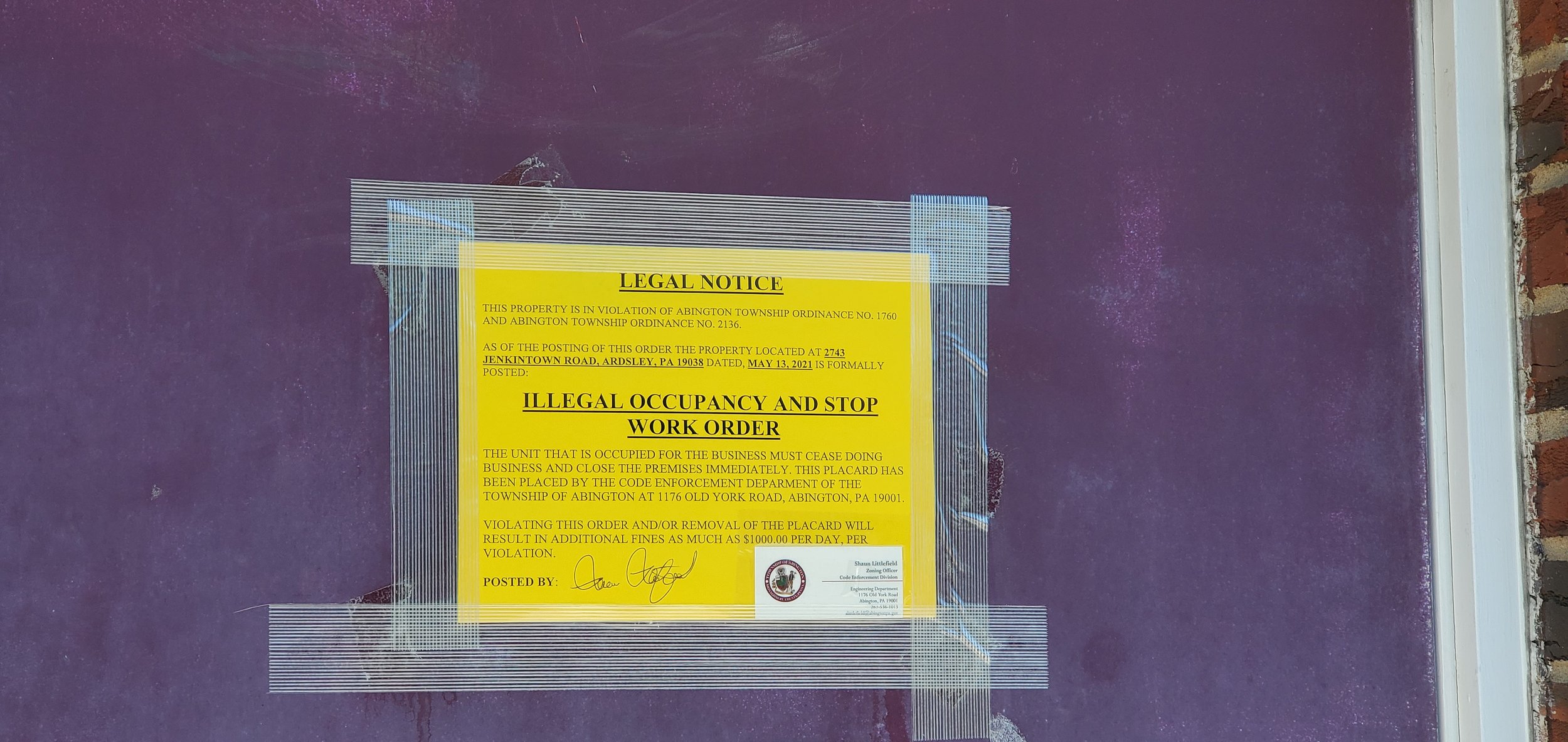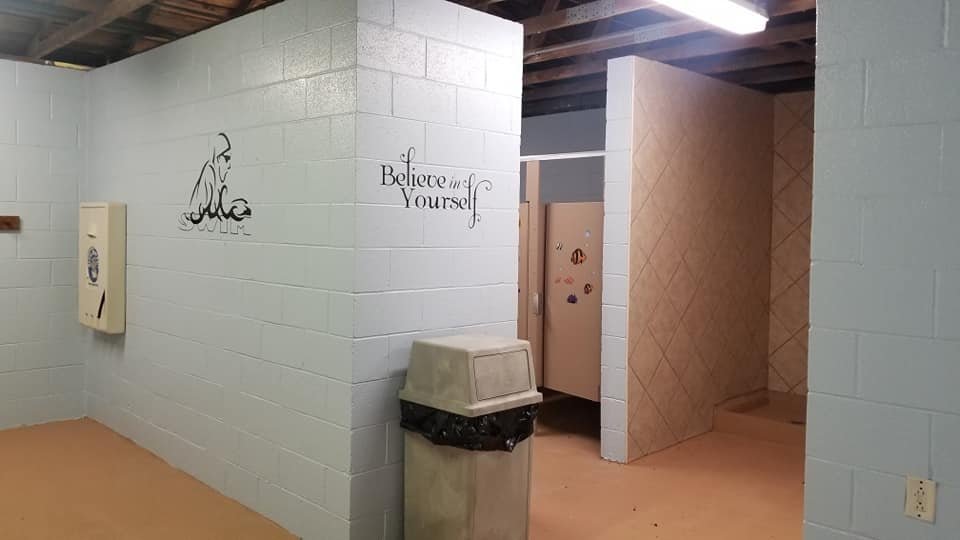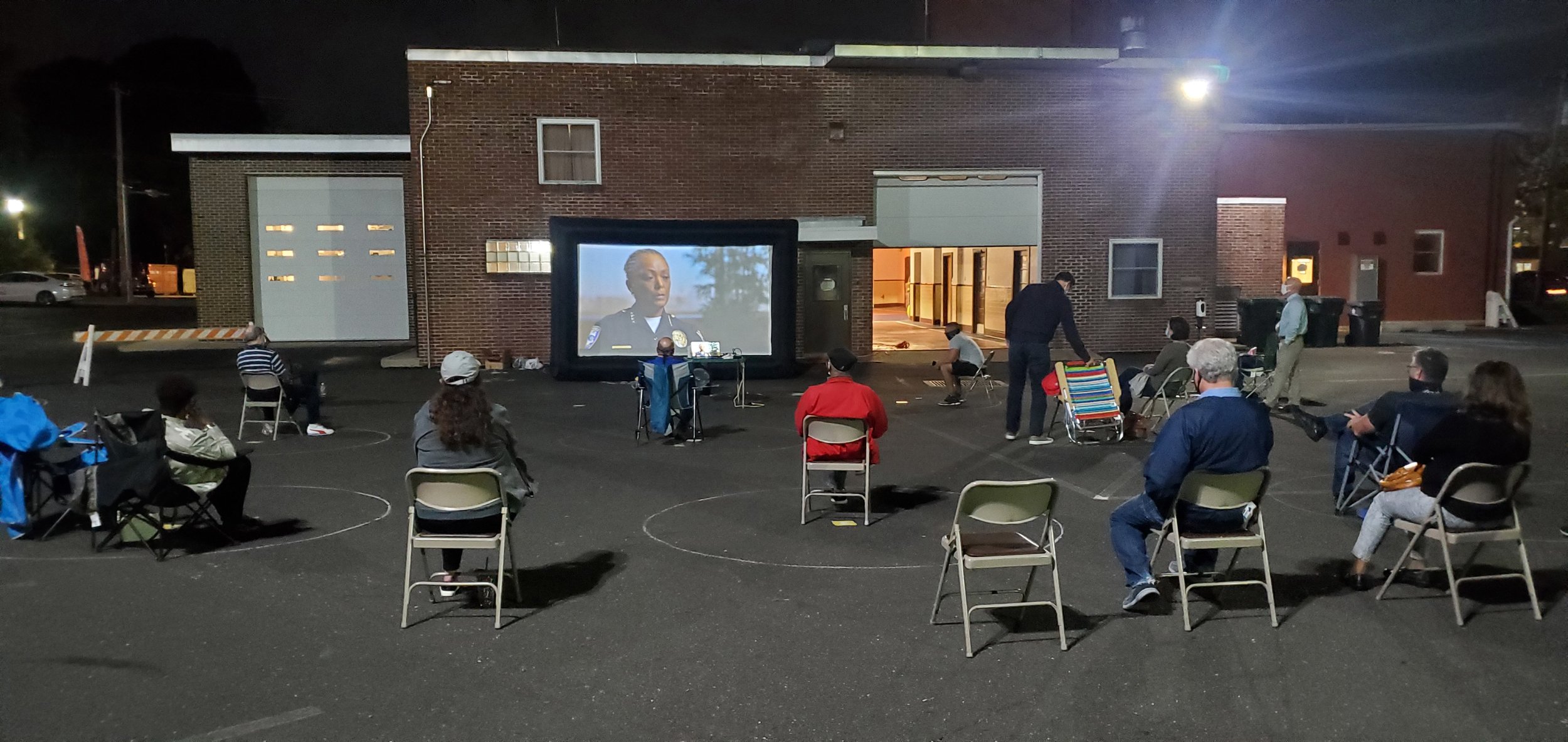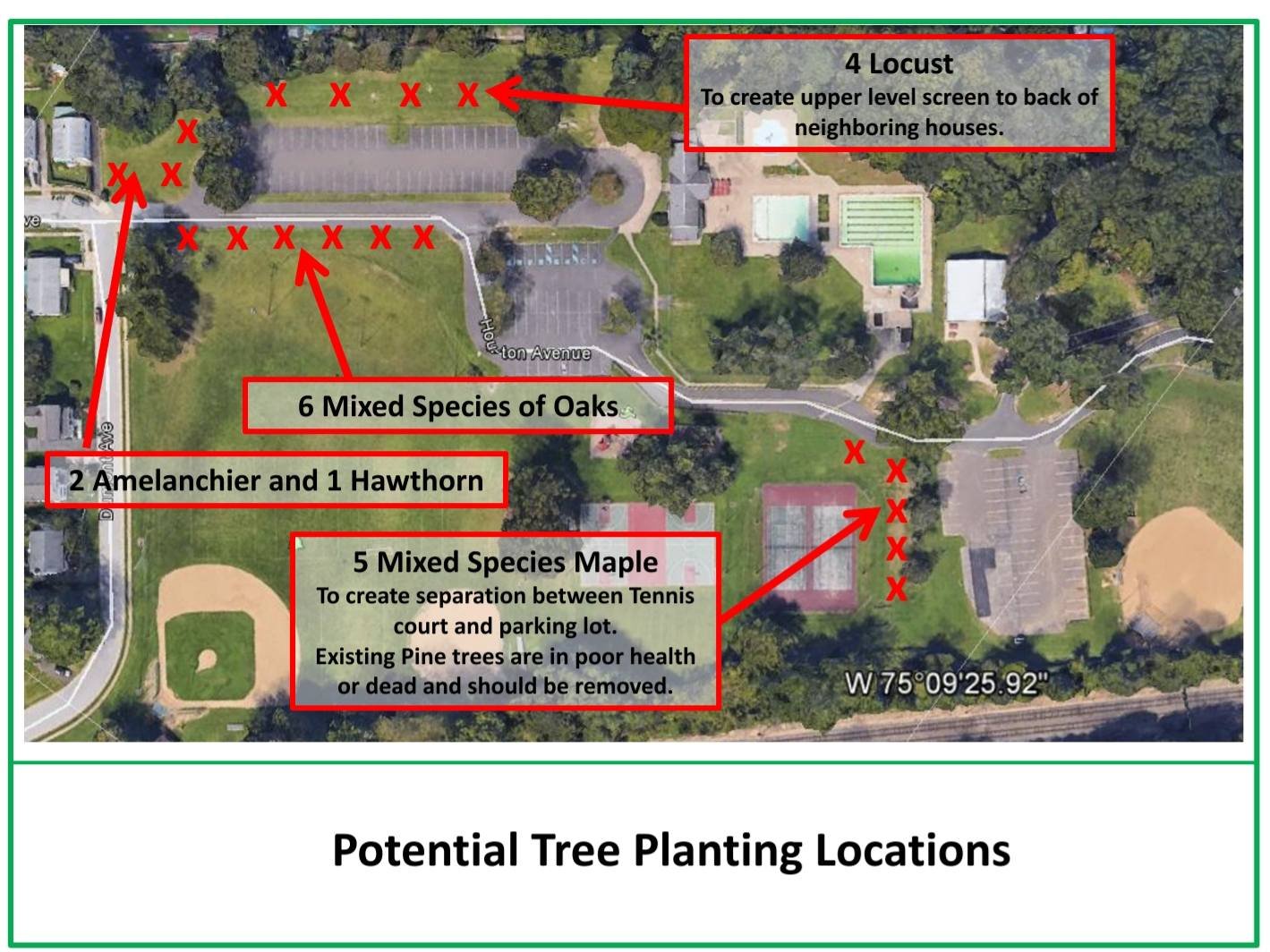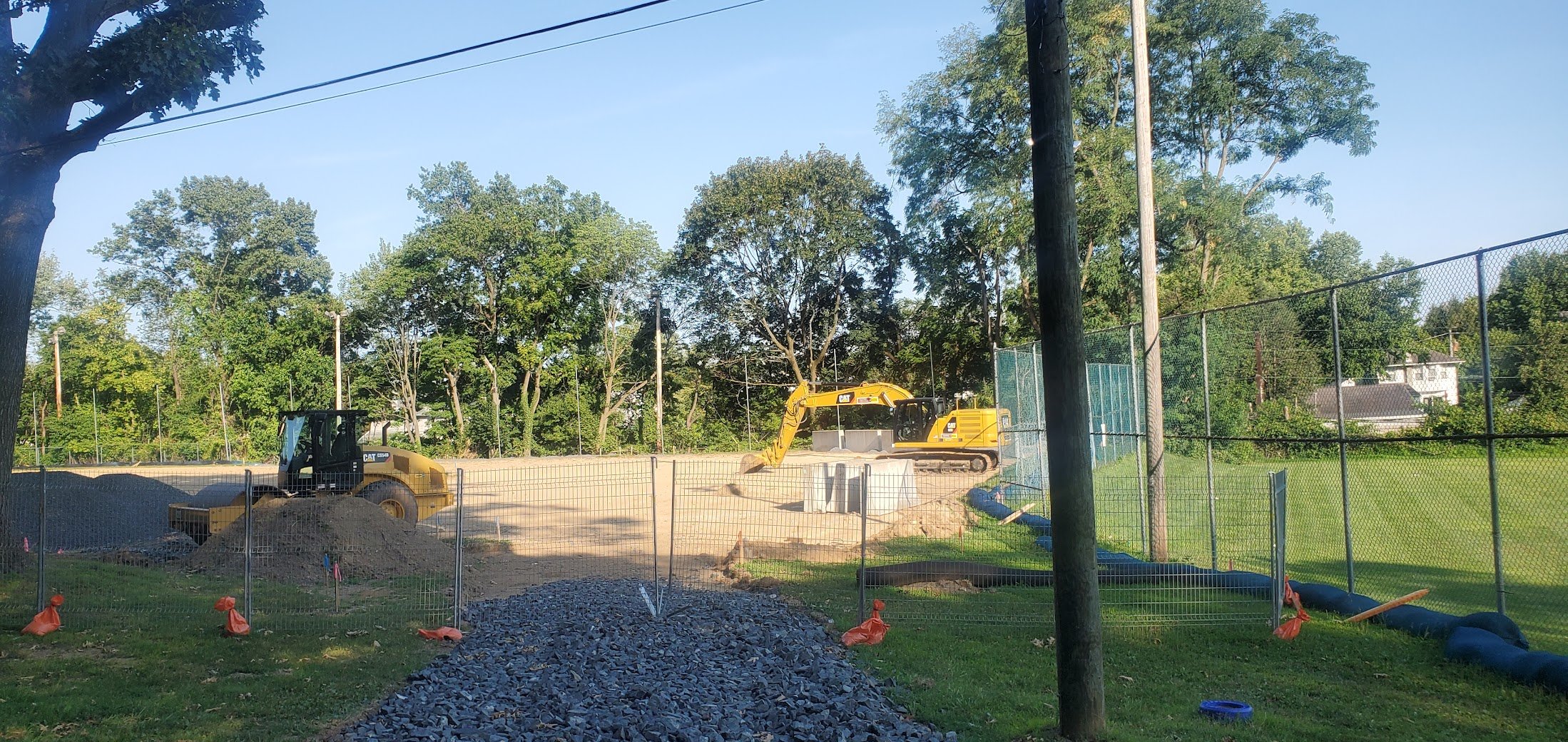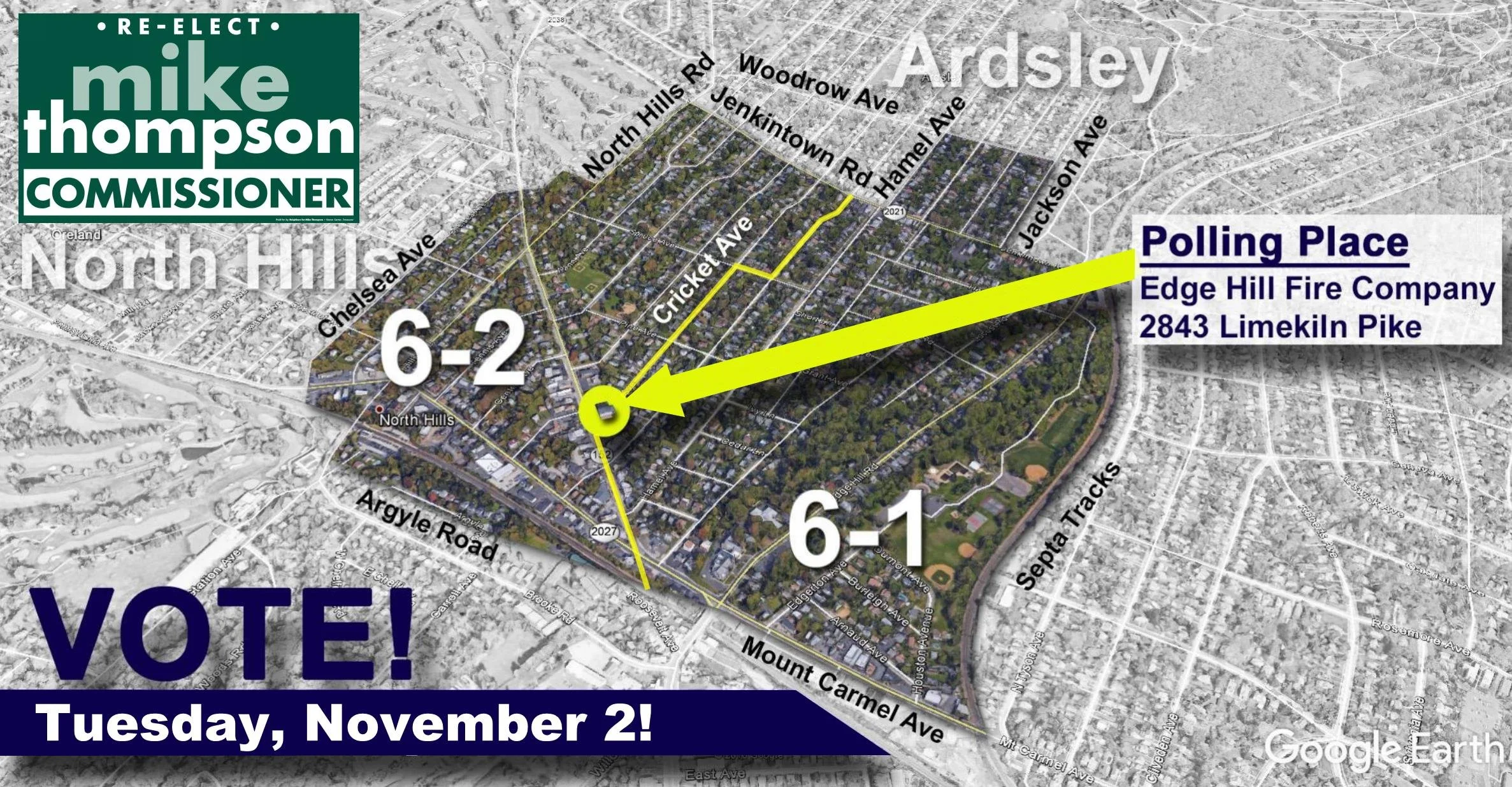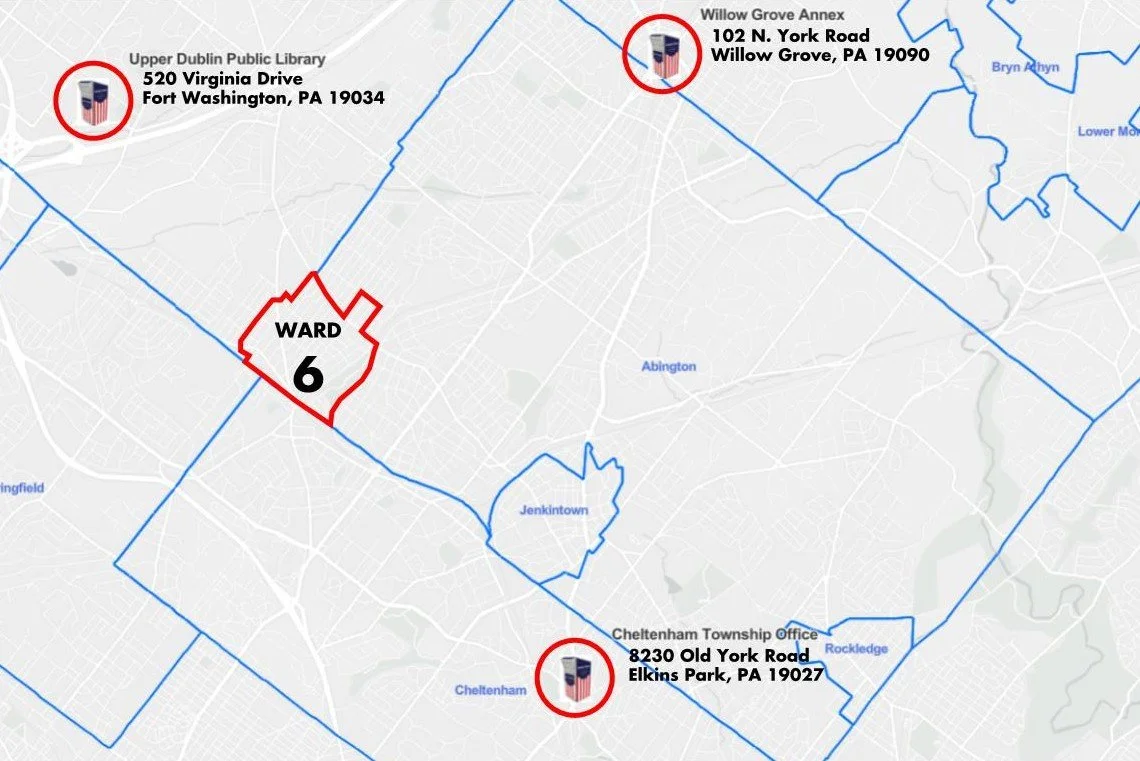The Abington Environmental Advisory Council is seeking input on plastics in our Township. Please feel free to click below and take the survey!
April's Board of Commissioners Meeting
This Thursday, 4/14, the Board of Commissioners will hold their standing monthly meeting, along with a working session. These meetings will be held in hybrid format- Zoom and In-Person. Below is call-in info and agenda information for both meetings. As always, I encourage you to call-in, comment, and be heard.
The [complicated] Housing Discussion
4/14/2022 Update: During public comment tonight, we heard from a commenter that was not thrilled by DVRPC, but trusted the Brookings Institute. As some of you who have emailed me previously know, I too am a fan of the Brookings Institute. Today, they released initial data as it relates to outward migration trends from urban cores from 2019-2021, and how it has effected suburban counties like Montgomery County. Click the image below to learn more.
April 11, 2022
Over the past few months, the Comprehensive Plan Development Team (CPDT) has heard quite a bit from residents on the housing topic. While there is a lot of fear-mongering “the developers are going to change the zoning and bulldoze your houses” gossip floating around on social media, in order to get the full story there are a number of issues that should be considered:
Where is this demand coming from?
Do we really need to add units to the Township? I thought we were fully built out?
How do we know these units will be filled?
Where is this demand coming from?
To understand demand, we need to look at a few considerations: population trends, average number of residents per household, and average birth rates in the Township.
Population Trends
Abington Township is broken up into 15 Census districts, as depicted on the map below (Fig. 1A). 2020 Census data was released in the fall of 2021, and what we found was shocking- our population was 58,502, which was 2,330 more than the 2020 projections compiled by the Delaware Valley Regional Planning Commission (DVRPC), 3,098 more than in the 2010 Census. So, what does this mean? Well… we don’t really know yet. The population count garnered in the 2020 Census already exceeded DVRPC’s 2035 projections, and exceeded the relatively stable birth rates as noted in the chart below (Fig. 2), suggesting that the influx isn’t necessarily from childbirths and the development of new families in the township, but rather, people moving here. This is bolstered by the latest 2020-2021 Vintage 2021 population data published by the US Census Bureau, showing a death rate that now exceeds the birth rate in Montgomery County, but net population gains of 3600-4400 which are attributed on migration (only 440+ due to international migration).
There are other variables to be considered in the immediate past, as well. We’ve seen a lot of instability in the past two years, from COVID-19 to increasing crime rates in the city to a war in Ukraine. What does that mean for the future? Again, hard to say, but we should expect an interim spike as urban outflow continues and as we see a small percentage of the estimated 7 million Ukrainian refugees settle right here in Abington, home to a robust Ukrainian population in a state with the second highest Ukrainian population in the country.
Fig. 1B- Abington’s population trend since 1890. Notably, despite the 2020 spike, Abington remains below its 1970 peak population, and relatively stable in its population despite outcry to the contrary.
Abington’s Average Household Size
Abington’s average household size, like most other jurisdictions, has been in decline for a very long time. 2020 brought with it a unique situation- the COVID-19 pandemic. We all remember the sudden shuttering of the world, crash of financial markets, and a rapid drop in employment rates. Some of this contributed to the noted slight increase in the number of residents per household (up to 2.62 from 2.55 per Chapter 5). This is another indicator that the 2020 Census data could be a spike in the trends. Personally, I would expect this number to continue to decline post COVID, as it has been doing consistently so from its highs in the 1700s. Modern households simply are not the same size as they were in previous generations.
Average Birth Rate
Abington’s birthrate has remained relatively steady over the past few years, which is a relatively consistent with the decrease noted in Montgomery County as a whole (Fig. 2 below). This 1% rate is not commensurate with the 5.5% population increase seen in Abington from 2010 to 2020, which is likely an indicator that population increase in the Township is caused more by migratory patterns then births.
Do we really need to add units to the Township? I thought we were fully developed?
We keep seeing this term… “the Township is 98% developed.” What does that mean? Its an undefined term that appears to stem from the 2007 Comprehensive Plan update, which I believe relates to housing and the zoning capacity at that time (note, the zoning ordinance was revised in 2017). The latest housing projections from the Delaware Valley Regional Planning Commission (DVRPC) reveal a capability for the township to add enough units to accommodate up to 2,682 residents under the current zoning, based on their map below. Based on the current 2020 Census population of 58,502, that puts us at around 95.5% developed.
According to the 2020 US Census, Abington was roughly 94.8% occupied (meaning there is additional capacity beyond what is noted above). This ranged from a low of 84.1% occupied in the southeast corner of the Township to 98.6% occupied in the Roslyn as shown in Fig. 3 below. Neighboring communities generally aligned with these occupancy rates, ranging from 95.03% in Upper Moreland to 92.85% in Cheltenham.
Fig. 2- Abington vs Montgomery County Birth Rates
Fig. 3B- DVRPC population capacity projections based on current zoning and submitted projects (Rydal Waters, Baederwood, and Mission Green on the Philadelphia/ Abington border).
How do we know these units will be filled?
Hard to say for sure, few things in life are guaranteed. But what we do know is this- in the past 10 years, we’ve seen a population increase of 3,098, a slight household resident increase to 2.62 residents per household (which includes a recent COVID bounce of young people moving back in with parents in 2020), and a only a slight bump in the number of residential units in the Township of 180 units. 2020 Census data showed a vacancy rate of 5.2% overall (Chapter 7.3.2) within the Township, while our neighbors in Upper Dublin and Upper Moreland were showing vacancies of 3.52% and 4.97% respectively , mainly due to the addition of new residential units (Cheltenham’s 2020 vacancy was 7.15%, despite adding very few units over the past 10 years) . Most of our neighbors continue to plan for growth, broaden their tax bases to offset escalating costs that come with inflation (even when inflation is not at record highs), which, in turn, minimizes tax increases associated with inflation on residents. Additionally, we have an aging population- by the mid-2030s, the over-65 generation will outnumber children. The needs and desires of that generation will shift- they will not want to mow lawns, shovel snow, or climb stairs, they will want lower maintenance housing- what are we doing to keep our residents close to their grandchildren here in Abington?
In terms of strictly numbers, we know a few things. We know Abington’s population increased by 3,098 residents. We know Abington added 180 single family detached, single family attached, and multifamily units (Chapter 7, 3-5), and saw the approval of 85 units at Rydal Waters, 244 units at Redstone at Baederwood, and 104 units at Foxcroft (Pavilion), for a total of 509 units in the past 10 years. In terms of raw population, 3,098 residents divided by 2.62 residents per household equals a need for 1,182 units. We’ve added 43% of the needed units over the past 10 years, and we anticipate that need to grow, and the gap to widen without action moving forward. Another reminder, per Chapter 7.3, residents per rental unit = 2.08, vs residents per owner-occupied housing of 2.76, meaning the need could actually be higher. Per DVRPC, under the current zoning, we could accommodate 2,682 residents, which definitely is more than the 1,766 difference in what we’ve accommodated vs what we could accommodate to account for future growth. We’re short on housing now, why not manage growth proactively?
Fig. 4.1- Housing demand in Montgomery County.
What to make of everything I said above…?
Our population has increased more rapidly then anticipated, and housing hasn’t kept pace. We have capacity under the current zoning, but population will continue to increase- the question is, by how much, will the statistics and zoning align, and how do COVID-19 and global politics play into the discussion?
In my next newsletter- what does our current housing stock look like, how has the value increased, how old is it, and does it conform with the desires of the next generation of homebuyers wants, needs, and affordability?
War in Ukraine
Over the course of the war in Ukraine, I will be updating any community fundraisers or support events on this page. If you have any events or anything you would like to share, please feel free to email me at mthompson@abington.org
Slava Ukraini!
Upcoming Board of Commissioners Meeting
The Board of Commissioners will hold our regular monthly meeting this Thursday evening, 3/10, starting at 7pm. Among the items on the agenda is an approval of bids to refurbish the restrooms at the Edge Hill Fire Company. I am proud to have donated my time and architectural services on a pro-bono basis to the Edge Hill Fire Company to support them on this project, which will provide updated restrooms to our first responders while also enhancing compliance with the Americans with Disabilities Act (ADA), making a space that serves the public accessible for all members of our community.
Comprehensive Plan Update
There has been a lot circulating on social media lately about the Comprehensive Plan, and I think its worth some time addressing some of the comments.
As mentioned in my last newsletter, the Comprehensive Plan is a high level (we’ll say 50,000’) view of our community. It addresses quite a bit- environmental and historic resources, community facilities, movement of people and goods, land use, and of note recently, housing. The latter has been the source of much understandable concern, but also the source of much misinformation.
The process of updating the Comprehensive Plan (Vision 2035) started in 2019. We built a team, called the Comprehensive Plan Development Team (CPDT), of nine township residents representing various constituencies across the Township. Those include several at-large positions, a representative of the Board of Commissioners knowledgeable in the PA Municipalities Planning Code (myself), a representative of the education community (in our case, someone from the Abington Education Foundation), someone representing the Environmental Community (either Environmental Advisory Council (EAC) or Shade Tree Commission (STC)), a member of the Township’s senior community (in our case, a senior that was previously a COO at a skilled nursing senior care facility), a member of the Township’s business community, and a member of the Township’s planning commission. All members are township residents, have been residents for some time, and plan on continuing to be residents of our community. None have any personal affiliations with any large scale, residential developers, and none have access to “tens of millions of dollars” as noted by one local blogger.
Per my comment above, its only been the housing discussion that has come up recently that has ignited any reaction in the community, and I should note that the Housing chapter was drafted some time ago- it was only the Future Land Use portion of the plan that has really fired up awareness.
Understandably, there is concern that the Township could see an unprecedented influx in the number of rental units being proposed, but there is also a notion that we are somehow besieged by developers. A map with circles all over it (below) from one of the Comprehensive Plan Development Team meetings has been circulated widely to bolster this narrative (and is inaccurate, as the team has halved the size of those circles, as shown at the end of this post). Without going into housing demand in this particular post, it is worth noting that the Township has not seen much development in the past 10 years… or longer, really.
Draft land use map, as presented to the CPDT by Montgomery County Planning Commission. This map was a first pass, was not approved, and has not yet been implemented into anything, despite assertions to the contrary.
As an example, take a look at Abington School District’s Enrollment Projection study, completed by the Montgomery County Planning Commission in 2016. Page 35 of this study lists the largest multifamily developments in Abington Township (true, it is not all inclusive, but we will get into that in a moment). Apartment complexes in this matrix are diverse, the largest of which is 532 units at Meadowbrook Apartments, which affects a dated Rydal Elementary School, and the newest of which is 224 units at the Plaza Apartments, opened in… 1976. You read that right… the last major, multifamily development occurred in Abington in 1976. True, there have been a few other developments that occurred in that time- these can be found on page 20.
Crest Manor in Willow Grove was rebuilt and there was a net add of units at that development (6 units, per page 20, although I believe it is double that), Rydal Park cottages were added (this was the Rydal Waters development that just opened, and is age restricted which minimizes impact on the school district). Additionally on this page- Baederwood SC, a 224 unit complex that was recently approved but has not yet broken ground, and Foxcroft, listed in the same report at 72 units but in actuality is over 100 units. Foxcroft is now under construction, Baederwood has their land development approvals, but has not yet commenced, and its worth noting that BOTH of these developments saw protracted, decade long legal battles before approvals were settled. Combined, these two developments account for under 400 added units to the township’s housing stock. This is in addition to total units added since 2010 (including recorded plans of fewer than 3 units) of 218. In my next post, we’ll talk about how that compares to population growth and housing pressures felt by the Township and region beyond in terms of population growth, a reduction of density in local households, and outside pressures that contribute to growth, such as the current geopolitical climate and issues such as Ukraine.
Bottom line- know that we do not take applications for multifamily housing lightly, and that your zoning and neighborhoods are not under attack. Our goal is to protect the character of the R1 through R4 districts (the vast majority of Abington), to protect greenspace, but at the same time balance an increase in housing demand. And, one more time, a reminder of what the Comprehensive Plan is not- an active rewrite of the Township’s zoning ordinance. Vision 2035 sets a vision, one that the Board of Commissioners can either legislate for or against later, but one that must examine what could happen, and one that must examine all possibilities.
If you’re still with me after all of that, great! More to come in my next newsletter. In the interim, feel free to reach out to me with any questions- mthompson@abington.org. Next Meeting of the Comprehensive Plan Development Team- March 15.
*Unofficial Map* Based on a meeting several months ago, the mixed use districts proposed were pulled back to a 1/4 mile, not 1/2 mile, radius around town centers. The above map overlays those districts on our existing zoning map. Blue circles are the updated suggested overlay, and consistently align with feature zoning districts throughout the township, such as Main Street, Business Center, and AO districts already discussed in the current zoning. This map was compiled by myself, and is not a work product of Abington Township or Montgomery County Planning Commission.
In Memory of Chief Dave Schramm
Chief Dave Schramm. Photo courtesy of Weldon Fire Company.
This week, I was saddened to learn of the passing of Chief Dave Schramm. Dave was a former principal at Abington Jr High who came up through the ranks of the Glenside/ Weldon Fire Company. In recent years, he was was a tireless advocate for the five Companies in his role as Fire Services Administrator, and worked extremely hard to achieve accreditation for the Abington Fire Department, a rare distinction for an all volunteer fire department.
He will be missed.
Township Recycling
At February’s Working Session, the Board heard proposals regarding recyclables collected by the Township and how they are transferred and recycled. Abington is part of a consortium of townships that have banded together to find cost effective means of handling our recyclables, which recently solicited bids. The bid package showed signs of interest within the waste industry, but ultimately only two viable proposals were received- one from JP Mascaro (our current vendor), and another from Republic Services.
The link below will take you to the meeting agenda, which is accompanied by a technical document that dissects the bids in terms of scope, durations, and costs. It is a solid analysis, but really only focuses on the financial implications of the selection. Ultimately, it appears that Republic Services is the recommended vendor.
I am concerned by this. JP Mascaro, through their TotalRecycle venture (named in the proposal, read more about them here) has been our vendor for sometime, and has shown significant commitment to actually recycling our plastics- all of them. JP Mascaro has the technology to recycle FPP (Flexible Plastic Packaging), which includes items not previously considered recyclable, such as plastic bags, sandwich baggies, plastic wrapping, etc. By going with Mascaro, we stand to see more of our plastics recycled.
Although more cost effective in their 7 year proposal, Republic Services does not appear to have an ability to recycle FPP, the form of plastic more frequently encountered by most residents. Many of you emailed me in 2019 regarding this article, which is worth a reread, given that Republic is named in it. In essence, maybe we get what we pay for- lower cost, but less plastics actually recycled.
In terms of “what we paid for”… I also question the 7 year duration. Page 21 of the technical memorandum notes “JP Mascaro’s proposed pricing for the 5-year term is the best value, but very comparable to Republic Services’ proposed 5-year term pricing.” So, in the shorter term, comparable to Republic Services, but capable of recycling more material. Its also notable that the technology to recycle FPP is relatively new. In 5 years, we may find that the next round of bids is more competitive between multiple companies that all, at that time, might have the ability to recycle FPP.
We are one Township within the Consortium, but I am interested in your feedback on this one. Let me know your thoughts- go with the cheaper long term contract, or focus on the comparable short term contract in order to divert more plastics from landfills and incinerators. Email me at mthompson@abington.org.
Vision 2035- What is it???
Since the end of 2019, Abington has been engaged in an update of its Comprehensive Plan, which we’ve dubbed Vision 2035. This plan sets a vision that seeks to manage change as it occurs within the township over the next 10 to 15 years.
Here’s an overview of where we are in the process.
What is a Comprehensive Plan?
It is a high level, 50,000’ view of the Township, one that seeks to manage inevitable change as it occurs over the next decade. According to the PA Municipalities Planning Code (Act 247 of 1968), Article III, a Comprehensive Plan “shall be reviewed at least every ten years” (note, the last time Abington’s was reviewed was in 2007), and shall include the following:
1) A statement of objectives of the municipality concerning its future development, including, but not limited to, the location, character and timing of future development, that may also serve as a statement of community development objectives as provided in section 606.
Abington’s objectives (chapter 2) have been drafted, and can be found here. draft demographics information (chapter 5) for background purposes can be found here. draft historical information (chapter 3) can be found here, with additional graphics here.
2) A plan for land use, which may include provisions for the amount, intensity, character and timing of land use proposed for residence, industry, business, agriculture, major traffic and transit facilities, utilities, community facilities, public grounds, parks and recreation, preservation of prime agricultural lands, flood plains and other areas of special hazards and other similar uses.
Abington’s Plan for Future Land Use (chapter 13) is currently being drafted by the comprehensive plan development team. Abington’s existing land use (chapter 4) is described here, with additional graphics here.
2.1) A plan to meet the housing needs of present residents and of those individuals and families anticipated to reside in the municipality, which may include conservation of presently sound housing, rehabilitation of housing in declining neighborhoods and the accommodation of expected new housing in different dwelling types and at appropriate densities for households of all income levels.
Abington’s Housing Plan (Chapter 7) has been drafted and is extensive. part 1 can be found here, part 2 can be found here.
3) A plan for movement of people and goods, which may include expressways, highways, local street systems, parking facilities, pedestrian and bikeway systems, public transit routes, terminals, airfields, port facilities, railroad facilities and other similar facilities or uses.
Abington’s Transportation Chapter (Chapter 11) has been drafted and is currently under review by MCPC.
4) A plan for community facilities and utilities, which may include public and private education, recreation, municipal buildings, fire and police stations, libraries, hospitals, water supply and distribution, sewerage and waste treatment, solid waste management, storm drainage, and flood plain management, utility corridors and associated facilities, and other similar facilities or uses.
Abington’s Infrastructure and Community Services chapter (Chapter 8) has been drafted and is currently under review by MCPC.
4.1) A statement of the interrelationships among the various plan components, which may include an estimate of the environmental, energy conservation, fiscal, economic development and social consequences on the municipality.
This section (Chapter 14) has not yet been drafted.
4.2) A discussion of short- and long-range plan implementation strategies, which may include implications for capital improvements programming, new or updated development regulations, and identification of public funds potentially available.
This section (Chapter 15) has not yet been drafted.
5) A statement indicating that the existing and proposed development of the municipality is compatible with the existing and proposed development and plans in contiguous portions of neighboring municipalities, or a statement indicating measures which have been taken to provide buffers or other transitional devices between disparate uses, and a statement indicating that the existing and proposed development of the municipality is generally consistent with the objectives and plans of the county comprehensive plan.
Abington’s Compatibility with Development and Plans of Surrounding Areas plan (Chapter 14) has not yet been drafted.
6) A plan for the protection of natural and historic resources to the extent not preempted by federal or state law. This clause includes, but is not limited to, wetlands and aquifer recharge zones, woodlands, steep slopes, prime agricultural land, flood plains, unique natural areas and historic sites. The plan shall be consistent with and may not exceed those requirements imposed under the following: [note, its a long list, see the actual MPC]
Abington’s historic preservation chapter (chapter 6) can be found here, with additional graphics here.
(7) In addition to any other requirements of this act, a county comprehensive plan shall:
(i) Identify land uses as they relate to important natural resources and appropriate utilization of existing minerals.
(ii) Identify current and proposed land uses which have a regional impact and significance, such as large shopping centers, major industrial parks, mines and related activities, office parks, storage facilities, large residential developments, regional entertainment and recreational complexes, hospitals, airports and port facilities.
Abington’s Compatibility with Development and Plans of Surrounding Areas plan (Chapter 14) has not yet been drafted.
(iii) Identify a plan for the preservation and enhancement of prime agricultural land and encourage the compatibility of land use regulation with existing agricultural operations.
(iv) Identify a plan for historic preservation.
Abington’s draft Historic Preservation chapter (chapter 6) can be found here.
What is a Comprehensive Plan… not?
Vision 2035 is just that… a vision. The Vision will be used to influence policy set by the Board of Commissioners, but is not a guarantee of anything. The Comprehensive Plan Development Team will look at potential options that we can currently identify, and discuss. The Board of Commissioners will learn about those visions via the plan, and legislate around them- either for or against. The Team has an obligation to review and understand whatever possibilities currently exist.
Likewise, the Plan is not a Zoning Ordinance rewrite, nor a Subdivision and Land Development Ordinance (SALDO) rewrite. Both of those will follow the plan and will be influenced by it, either for or against.
Additionally, it is not a proposal to develop or build… anything. The Township is not in the development game. Development of property is left to the property owner, and it is up to the Township to responsibly set policy that will determine what property owners can and cannot do, while also considering legal precedent and what will, or will not, stand up in court in the future.
In my next newsletter, I will focus on Chapter 1 of the plan- Vision. Until then, feel free to click the link below to access Abington’s Vision2035 web page. Upcoming Comprehensive Plan Development Team meeting dates are as follows (note, these are open to the public):
March 15, 2022, 6 PM
April 19, 2022, 6 PM
After the April meeting, we hope to have a draft of the plan compiled. Keep an eye out for community round table discussions and legislative next steps to adopt the plan over the summer. Our goal is to have this in front of the full Board of Commissioners for adoption sometime later in 2022, but ultimately, we have to get the plan right, however long that takes.
Spring & Summer 2022 Activities Guide is Here!
The 2022 Abington Township Spring and Summer Activities Guide is here, and should be arriving in mailboxes soon! The Township is pleased to offer many great events this year, but there is one change of note in this year’s guide- Pools will open for weekends starting on May 28th! That’s right… Memorial Day weekend! Pools will open daily starting June 25th.
Last year’s staffing shortage proved challenging to keep both Penbryn and Crestmont open and operational. The shortage continues this year, but we are working hard to be more proactive staffing-wise this year. Fingers crossed for a longer season!
Also, we hope to have a terrific announcement in April regarding Parks and Rec!
Final Limekiln Pike Bridge Closure
The final (fingers crossed) bridge closure for the Limekiln Pike bridge will occur next weekend. Work for this closure will focus on the removal of a water bridge for Aqua PA, which will involve temporarily de-energizing Septa’s lines for Track 2 to accommodate the work.
Final Leaf Collection
The final leaf collection of 2021 will happen this Wednesday, December 22. Tomorrow is supposed to be a beautiful day (a little chilly, though), so take advantage of that and get those last leaves to the curb!
Santa is Coming!
Edge Hill Fire Company will be driving Santa through North Hills and Ardsley, starting at 11:45am tomorrow (12/19) morning! It will take a few hours for him to make his way throughout the neighborhoods, so please be patient!
Halloween Candy Drive!
Don’t forget to bring your extra Halloween candy with you to the polling place tomorrow! We will be collecting extra candy to send to our troops overseas, in hopes that we can brighten their holiday season while they are away from their families. Simply put everything into a plastic bag (preferably one that’s not too heavy- last year we collected 125 pounds of candy!), and drop it in the box located outside of the polling place at the Edge Hill Fire Company.
Closing Argument
Well, its been an interesting election year to say the least, but here we are- the day before Election Day. Over the past four years, we’ve accomplished much- we’re on the precipice of cleaning up our drinking water, saw the installation of a new turf field in Penbryn Park, fixed sidewalks, worked on slowing traffic, closed an illicit massage parlor, and so much more! Tomorrow starts the next chapter- the first municipal election of the COVID-19 pandemic. The priorities have changed post-pandemic, but my focus on the work remains the same. We need to prioritize our local businesses- fill up the vacant storefronts that exist on Limekiln Pike, Mount Carmel Avenue, and Jenkintown Road. Its time to focus on improving our parks and upgrading our park facilities- from pools to the development of a new inclusive playground in the township. Its also time to renew focus on our roads, how they connect people to places safely, and how they foster walkability and safety. Its time to focus on our township overall and its economic sustainability in a post-pandemic era.
Tomorrow, I hope you will give me your support. For the past four years, I’ve been regularly providing you with information, answering your phone calls, knocking on your doors because I want to hear from you, and ready to face your feedback, whether good or bad.
I’ve opted not to go negative in my campaign. The choice before you tomorrow is one of local office, not democrat or republican, not national level politics, and not petty nonsense and fiction. Tomorrow is local- your kids, your immediate environment, your trash collection, your drinking water, your parks, and so much more. The power that comes with being a Commissioner is one of satisfaction- one of helping out your neighbors, and one of knowing you’re making a difference in your community.
Tomorrow, whether it be by mail or in person, please cast your vote for me to serve you for the next 4 years as Commissioner. There is much for us to do, and in the post-pandemic era, experience and maturity counts.
Thank you for your support.
Election Day!
Election Day is here! Polls will open at 7am tomorrow morning and close at 8pm tomorrow evening, November 2. On the ballot this year- municipal positions, school board, and judges (state supreme court, commonwealth court, and common pleas court).
The Ward 6 polling place is at the Edge Hill Fire Company (2843 Limekiln Pike). Vote in person or vote by mail, just make sure you VOTE! If you’re voting by mail, you have until 8pm tomorrow evening to drop your ballot in one of the below ballot boxes.
Learn More About the Candidates
There are plenty of non-partisan resources out there for this year’s election, so here’s a few for your pre-election reading pleasure. Click on the images below to read more.
Willow Grove NAACP Candidate Forum
Endorsements:
Pennsylvania Supreme Court: Maria McGlaughlin
Pennsylvania Superior Court: Timika Lane
Pennsylvania Commonwealth Court: David Spurgeon and Lori Dumas
Montgomery County Common Pleas Court: Nicole Tate-Phillips (Abington resident!)
Montgomery County Jury Commissioner: Joanne Olszewski
Abington School Board: Leah Fesi, Yaasiyn Muhammad, Brian Allen, Angelique Frazier
2021 Leaf Collection
Leaf Collection starts next week, so use this weekend to prepare! The first collection will occur between November 1-5 in the Ardsley/ North Hills area, followed by November 29-December 3 for the second collection.
FY 2022 Budget Roll Out
Tonight (10/28), the Township will roll out its FY 2022 budget. There is good news, and there is bad news. The good news is that the Township received $19 million this year from the federal government due to the American Rescue Plan Act of 2021. While this money goes far to cover a lot of expenses, it also comes with a number of strings attached, and is not a cure all, so… the bad news is that, after not increasing taxes in 2020, a tax increase is inevitable this year. This was predicted in the 2019 budget, deferred due to severe cuts in 2020 as a result of the pandemic, but now is an unavoidable reality.
There are a number of upsides in this year’s budget- we’ve reduced the fund balance (in essence, the cash reserves that we hold for emergencies) from a level that would cover 90 days of operating expenses to the state mandated 60 days of operating expenses, which frees up some cashflow. 2022 is also the year that we will pay off all of the Township’s debt, meaning there will be no more debt service after this year. Unfortunately, the Township has only added a net of less then 200 residential units in the past 10 years, and has lost an assessed tax value of approximately $5 million in the past year alone due to the lack of development, which is the highest in a trend of declining value that started occurring in 2018. This reduction of assessed value, combined with the skyrocketing costs of goods and services in the post-pandemic era, has led to an increase that is otherwise insurmountable.
The budget roll-out include an orientation of new web-based software that will make it easier for the public to inspect the proposed FY 2022 budget and find pertinent information and detail. A link to that website will be provided following tomorrow night’s meeting.
As with previous township meetings, this one will be a hybrid format. Space inside the township building will be provided for public participation, but the meeting will predominantly be hosted via Zoom. A link to the Zoom info can be found below.
Future Land Use Public Workshop
Abington Township's Comprehensive Plan Development Team will be holding a public workshop this Saturday, October 30, 1 to 3 PM at Crestmont Clubhouse. Join us in small-group discussions with fellow Abingtonians about future land use. Specifically, we’d like to hear your opinions about how shopping and neighborhood centers should change to best meet the community’s needs into the future. We hope you'll join us! For more information on the comprehensive plan, visit www.abingtonpa.gov/vision2035.
Due to COVID-19 concerns, we will be holding this workshop outside at Crestmont Clubhouse, so please make sure to dress appropriately, as the weather is not looking like it may be cold and wet. We will be sheltered from the rain.
Additional note: there’s quite a bit of misinformation floating around social media regarding the Comprehensive Plan. In fact, the reality is that we need to update the plan once every 10 years per the PA Municipalities Planning Code. Suggestions discussed within the plan, such as the undefined image below, are not ordained- they are simply the starting point of a vision to guide the future update of the Zoning Code, Subdivision and Land Development Ordinance, and other policies that will guide the township in the future. These are worth discussing, but should not be considered a done deal or carved in stone, they are there for purposes of discussion, and discussion is exactly what we want.


















